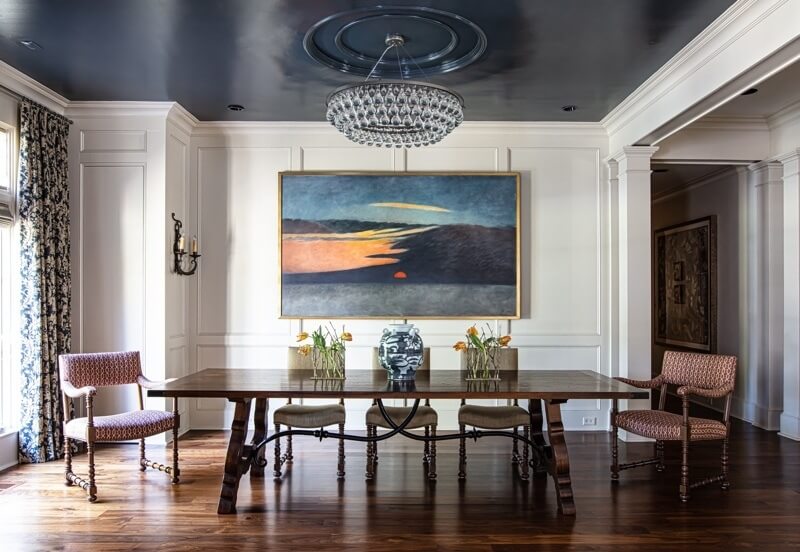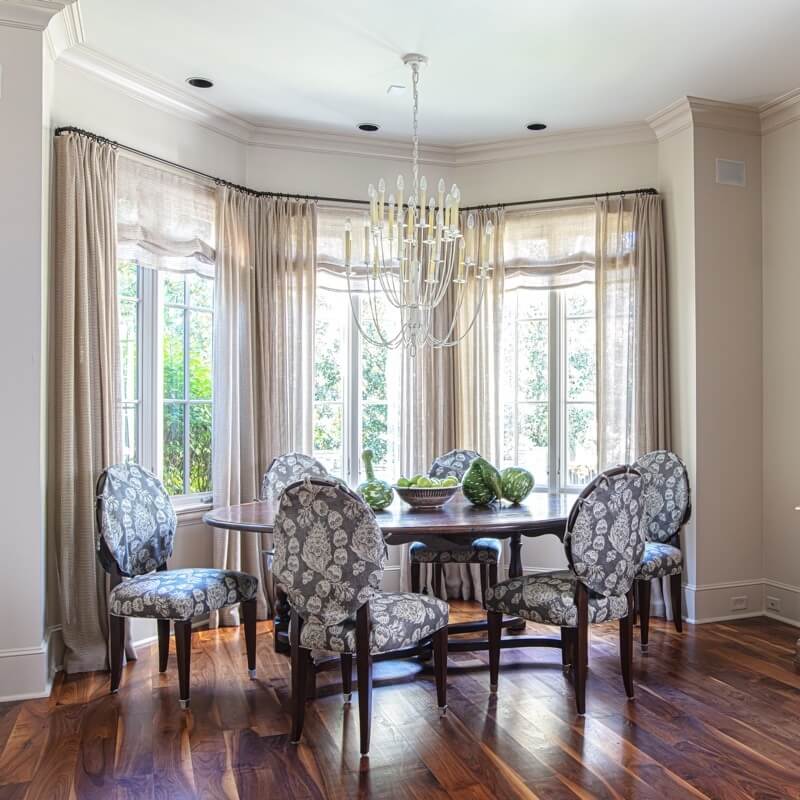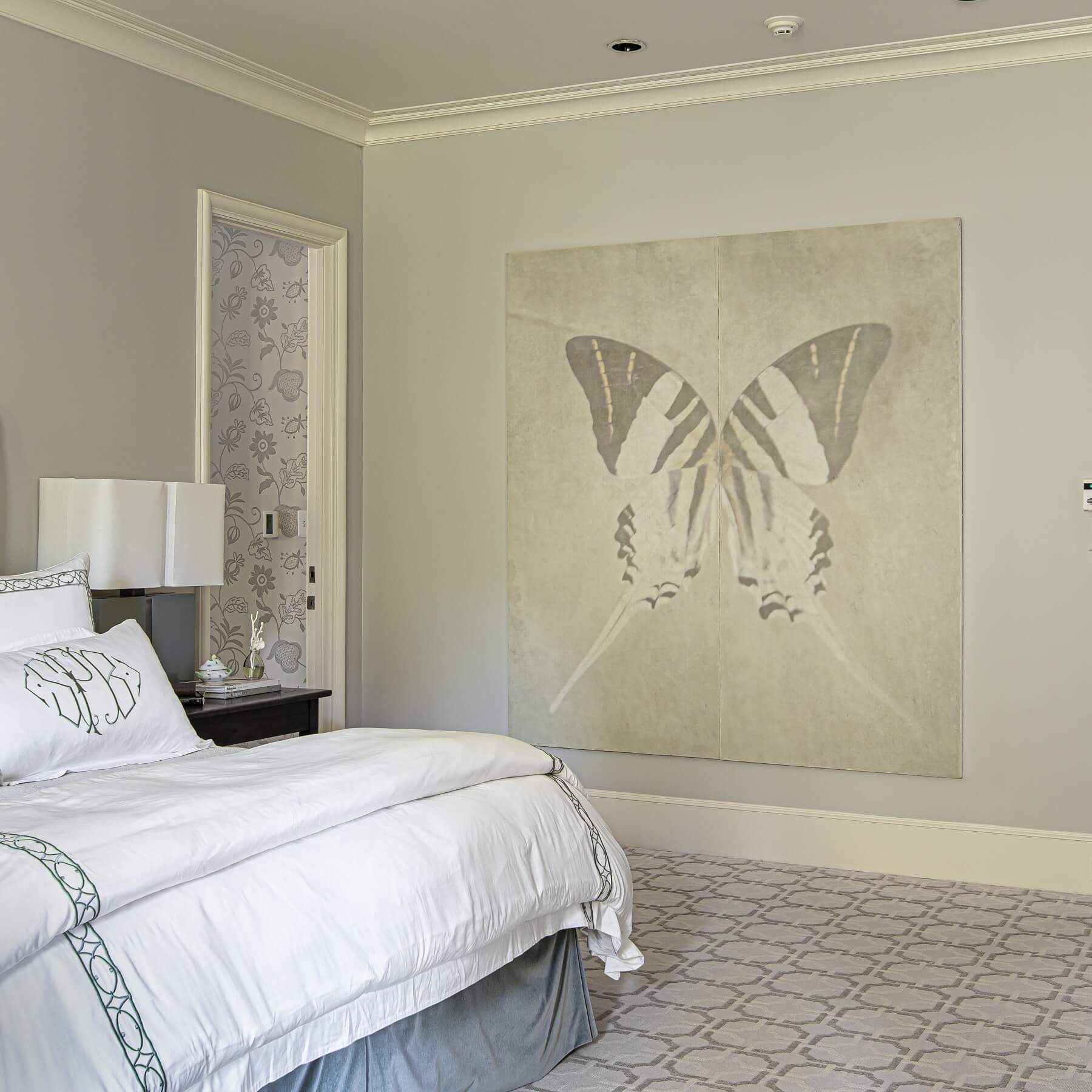sponsored content
Much more goes into a flawless and well-styled home than meets the eye. According to interior designer Rhea Crenshaw, it takes hours and hours (and hours!) of thoughtful planning to design rooms that inform (but don’t mimic) each other with repetition of color and texture. But before paint colors are chosen and furniture is ordered, the Memphis-based designer starts with an in-depth conversation with her clients, because, as she explains, “It is important to know how people live and to understand how they function in their home.”
She continues, “Your home should reflect you and your family, so you feel like you belong in the space.” A recently designed home in a palette of blues, oranges, creams and golds is a reflection of the designer’s ability to redesign an entire house, from start to finish, while celebrating the style of those who call it home. It was critical to creating individual spaces while maintaining a sense of continuity, and Rhea accomplished this by establishing a consistent color palette inspired by the homeowners’ personal art collection.

The homeowners, who have occupied the home for a handful of years and haven’t made many (if any) changes to the design, have an enviable collection of artwork that includes pieces by Veda Reed, Anton Weiss, Freida Hamm, Chris Hayman, Kurt Meer, Matthew Hasty and Catherine Erb. Art was not only a major consideration when redesigning the home; it was the primary source of inspiration for Rhea. “We took different elements from the art and created a common thread,” the designer explains. A striking landscape in vivid hues of blue and orange that hangs on a wall in the dining room prompted the color palette and, therefore, the overall aesthetic. “The dining room was the beginning, and we carried the clay shades, blues and oranges throughout the house.” Echoing the vibrant blues of the Veda Reed painting, the deep shade of sea blue on the dining room ceiling makes you feel like you have stepped into the art. The colors recur throughout the home’s interior design in draperies, pillows and furnishes, which allows organic transitions between the rooms.
Even though all of the rooms share commonalities in color and style, the individual spaces stand on their own, Rhea explains. This was especially important in the dining and living rooms located just off the main entryway. There is little separation between the two spaces in terms of architecture, so Rhea delivered distinct (yet complementary) designs. While blue takes center stage in the dining room, shades of orange dominate the living room. Grasscloth on the walls gives definition and warmth to the room, and an orange sofa mirrors colors found in the art by Anton Weiss that hangs above it as well the landscape painting next door in the dining room.





“It was challenging to create singular spaces while creating a sense of continuity,” Rhea shares. When she set out to transform the house, art and color took top priority, but flooring, texture, a neutral background and scale are also key factors in redesigning an entirely cohesive home. For example, the original walnut flooring received a dark stain to ground the overall design and work in balance with the neutral color that coats the walls. The best example of texture is most evident in the study, where you’ll find velvet-covered walls in a deep shade of eggplant, and the proper use of scale is displayed in the den.
The velvet walls in the study came with the house, and Rhea kept them intact while introducing a design that fits with the rest of the home. “The walls are an unusual color, and I am not certain I would have chosen it on my own, but they were fun and challenging to work with,” she says.
Juxtaposing styles of furniture — from a Lucite table to a Victoria sofa — attract the eye, and golds and yellows soften the dark walls. While sitting on the sofa, you can see directly into the dining room and catch a glimpse of the Vera Reed painting that informs the use of yellow here.




Rhea watered down the color palette and brought softer tones of clay, blue and cream into the downstairs master bedroom. The chosen art, not surprisingly, complements the paler shades. An oversized piece by Catherine Erb occupies an entire wall in the bedroom and is, surprisingly, the only piece of art that hangs in the room. The headboard, a custom piece crafted with an antique French gate, is another focal point. You’ll notice the repetition of scale, color and texture that lives on the first floor, but the muted tones make this room more serene.



“In designing a whole home, it is important to determine a common thread that carries through each room. We spend a lot of time finding fabrics, colors and textures that work together but don’t fight one another. It can be a challenge, but we work very long and hard to design rooms that blend together without matching,” says Rhea. “We meet the fine line of designing spaces that challenge your sense but leaves you at peace.”
See more of Rhea’s work at rheacrenshaw.com.
This article is sponsored by Rhea Crenshaw Interiors. All photography by Julie Wage Ross of Ross Group Creative.



















